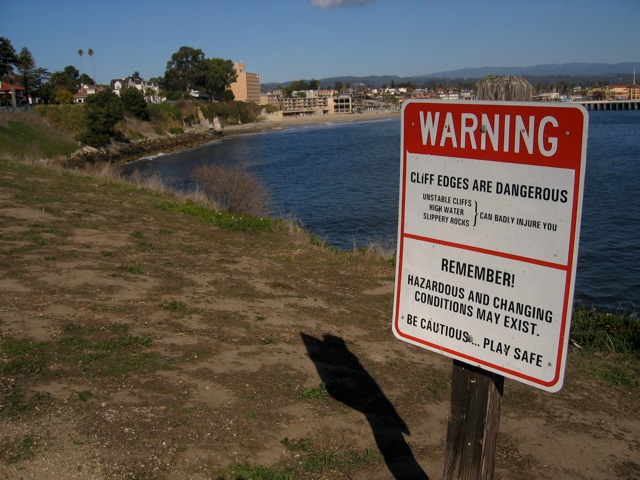USGS: Warmer ocean temps portend more erosion along the West Coast
This week researchers at the US Geological Survey (USGS) issued a damage report that assesses how badly El Nino patterns tore up West Coast beaches during the winter of 2009-2010. Up and down the coast, the survey logged beach erosion 36% above average. The study’s authors point to the intensity of the El Nino conditions during that time, as well as a geological shift in the region of warmer water. They say high water, heavy storms and warmer waters were the culprits. And they warn that with the changing climate, these events may become more common.
“This little winter is a snapshot of what climate change may look like where we have baseline higher sea levels and more significant storms.” said Patrick Barnard, a coastal geologist with the USGS in Santa Cruz.

One Bay Area snapshot the authors highlighted was San Francisco’s Ocean Beach. The thin coast retreated more than 184 feet, dumping the southbound lane of the Great Highway onto the beach. It took nine months before the lane was reopened and the clean-up cost $5 million.

The authors were surprised at the property damage spikes along the coast.
“Almost all the sites we looked at had erosion that was comparable or exceeded the last big El Nino in 1997-98,” says Barnard. George Kaminsky, co-author and a Coastal Engineer with the Washington Department of Ecology, says there is hope among the wreckage along the coast.
“In terms of preparing, it gives us a sense of what’s possible when the perfect storm happens,” he said. “We should be able to anticipate better and prepare, in terms of evacuation and getting people out of harm’s way.”
One thought on “Climate Change Chipping Away at the Coast”
Comments are closed.

You could build an artificial surfing reef off sloat that would dissipate the wave energy enough to protect the coast line there for around 5 million and increase tourism, boosting the local economy.